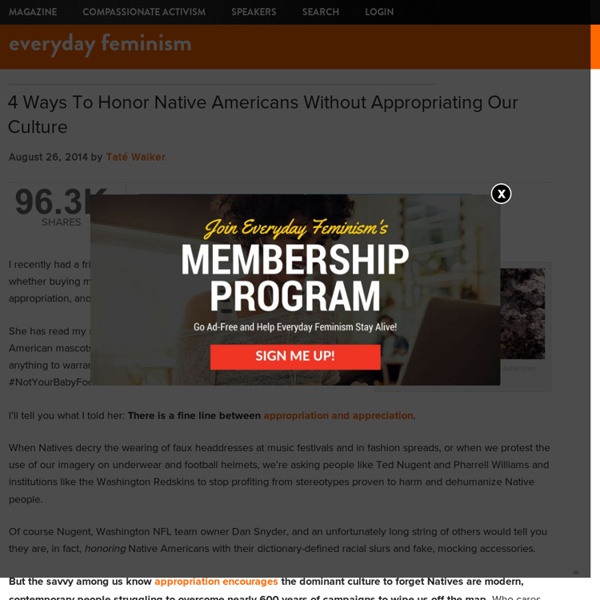



Native Fashion 101: Not Doing it Wrong, at least : femalefashionadvice Canada needs a law protecting Indigenous art from appropriation The United States and Australia have laws that protect various Indigenous art forms and symbols from appropriation by people and corporations, by prohibiting the misrepresentation of artwork as made by an Indigenous person and granting communal title to Aboriginal artwork, respectively. Is this something Indigenous artists in Canada need to champion? Or is success on that front as unlikely as the chances that Justin Trudeau and his cronies will implement the United Nations Declaration on the Rights of Indigenous People? Meanwhile, in the court of settler opinion, the right of Amanda PL, a non-Indigenous artist, to operate in absolute freedom is the card that trumps (a word I use deliberately) Indigenous artists’ deep concerns about cultural appropriation and plagiarism. It grates like a two-day growth of stubble against the kissable cheek of Indigenous art and artists. The latter are, rightly so, members of a closed club. And what exactly is the world of Western European art?
Beyond the dot: how Indigenous artists are shaking off stereotypes | Art and design For a long time, the dot painting has been synonymous with Aboriginal art. Emerging out of the remote Northern Territory community of Papunya in the early 1970s, the first dot paintings were produced when art teacher Geoffrey Bardon encouraged his Indigenous students to paint their stories in murals on the school wall. But long before that, circles and dots were used in ceremonies in the form of body paint or marks on the ground. The Papunya people drew on this knowledge in their art, painting stories, ceremonies and rituals, first on walls and then on canvas and board. dot, dot, dot […], a new exhibition at Sydney College of the Arts, tackles some of the issues around the use of Papunya dots in paintings, but also looks at why so many artists – Indigenous and non-Indigenous – are attracted to using dots in their work. The ubiquity of the dot painting was so powerful that Indigenous artists working in different mediums had trouble attracting the interest of the international art market.
Leslieville exhibition cancelled after Toronto artist’s work called cultural appropriation The cancellation of a Toronto artist’s exhibition has sparked a dialogue about what indigenous art is and who can create it. Toronto artist Amanda PL, 29, says her work is inspired by the Woodland school of art and acknowledges that it’s “very similar” to Anishnaabe artist Norval Morrisseau’s work, which features bright colours separated by black lines and abstract figures. But after Amanda PL’s planned exhibition at Visions Gallery in Leslieville was announced she discovered many people were “troubled” by her work. “From my point of view, authentic indigenous art comes from a place of our experiences, our personal narratives,” said Chief Lady Bird (Nancy King) an Anishnaabe artist based in Toronto. “The thing about the type of work that she’s creating is it’s heavily rooted in traditional ideals and different teachings and it’s considered sacred, so it wasn’t always even considered artwork in the way that we think about art now,” she said. “I felt really troubled by that.